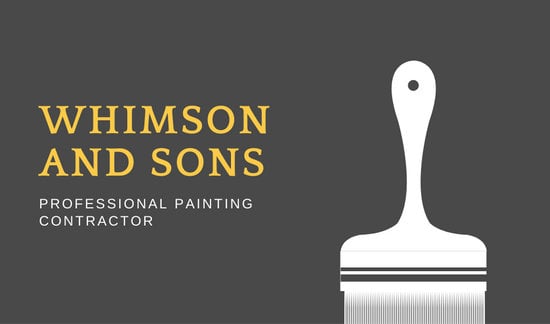Seasonal Factors To Consider For Commercial Exterior Painting: What You Need To Know
Seasonal Factors To Consider For Commercial Exterior Painting: What You Need To Know
Blog Article
Web Content Produce By-Leach Urquhart
When you're preparing an industrial outside painting task, seasonal variables can make or damage your results. You'll wish to think about exactly how temperature and moisture effect paint application and drying out times. Choosing the right season can guarantee your paint sticks properly and lasts much longer. However which seasons are truly the very best for this type of job? Allow's check out the crucial elements that can affect your project's success.
The Impact of Temperature on Paint Application
When you're preparing a commercial exterior painting project, the temperature level can significantly impact how well the paint sticks and dries.
Ideally, you want to paint when temperature levels vary between 50 ° F and 85 ° F. If it's as well chilly, the paint may not heal effectively, resulting in concerns like peeling off or fracturing.
On the other side, if it's also hot, the paint can dry as well rapidly, protecting against appropriate bond and leading to an irregular finish.
You must additionally consider the moment of day; early morning or late afternoon offers cooler temperatures, which can be a lot more favorable.
Always check painting fort worth for the specific paint you're making use of, as they commonly give assistance on the suitable temperature level array for ideal outcomes.
Moisture and Its Effect on Drying Times
Temperature isn't the only ecological variable that influences your commercial exterior paint task; humidity plays a significant duty too. High humidity degrees can decrease drying times considerably, influencing the total top quality of your paint job.
When the air is filled with wetness, the paint takes longer to cure, which can result in problems like inadequate attachment and a greater risk of mold growth. If you're painting on a particularly moist day, be planned for extended wait times between layers.
should you paint ceilings same color as walls to check regional climate condition and plan as necessary. Preferably, aim for moisture levels between 40% and 70% for ideal drying out.
Keeping these factors in mind guarantees your project stays on track and provides an enduring finish.
Best Seasons for Commercial Exterior Paint Projects
What's the most effective time of year for your commercial external paint tasks?
https://www.spokesman.com/stories/2023/mar/19/painting-the-pacific-northwest-idaho-artist-andy-s/ and very early loss are typically your best options. During these periods, temperatures are mild, and humidity degrees are typically reduced, producing optimal conditions for paint application and drying.
Stay clear of summer season's intense heat, which can trigger paint to completely dry too swiftly, bring about poor adhesion and surface. Similarly, winter months's cool temperature levels can hinder proper drying and curing, risking the durability of your paint job.
Aim for days with temperature levels in between 50 ° F and 85 ° F for optimum results. Bear in mind to inspect the local weather forecast for rain, as damp problems can spoil your project.
Planning around these variables ensures your paint task runs efficiently and lasts longer.
Conclusion
Finally, planning your business outside painting jobs around seasonal considerations can make a considerable difference in the end result. By organizing job throughout the perfect temperature levels and humidity levels, you'll ensure far better bond and drying times. Bear in mind to watch on neighborhood weather report and select the correct time of year-- springtime and early loss are your best options. Taking these steps will certainly help you accomplish a resilient and specialist surface that lasts.
